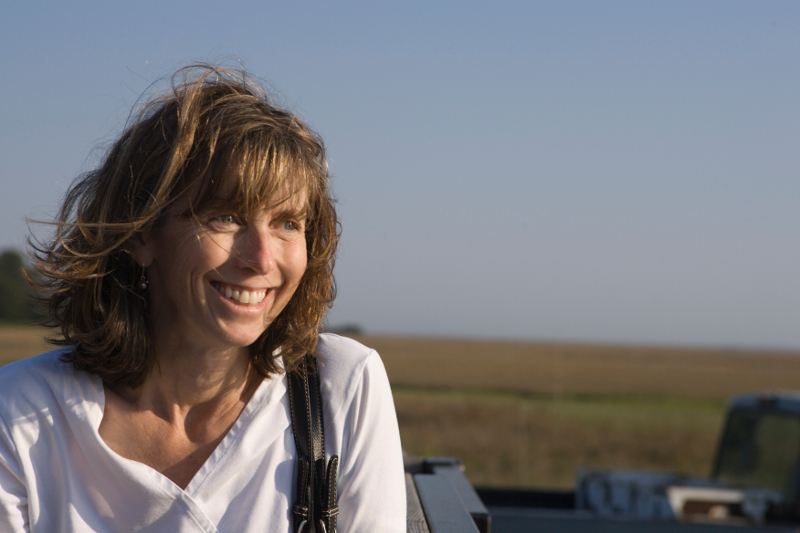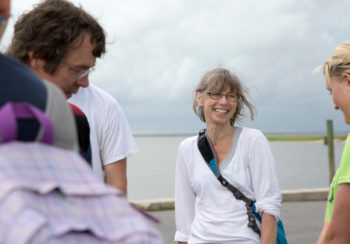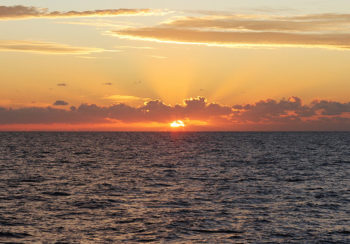Underwater geysers spewing out boiling hot fluids.
Little invertebrate worms colonizing the hot vents that release these fluids into the deep ocean. Charred giant tube worms littering the landscape after the underwater chimney they lived on collapsed—and that’s just what Mandy Joye saw on one 14-hour dive in the Gulf of California.
The bottom of the sea floor offers a glimpse into the ancient processes that formed the earth, something Joye, Georgia Athletic Association Professor of Marine Sciences, describes watching as almost a religious experience. Watching as a remotely operated vehicle explored a site she and other researchers visited by submarine in November, they realized that a hydrothermal vent chimney had recently collapsed, creating a mystical seafloor scene.
“The fluid was being expelled like a fire hydrant blowing out of the seabed, and everything was covered in what I call fairy dust—sparkling metallic debris that glittered like gold-coated everything and came, we believe, from minerals inside the chimney that had disintegrated,” she says. “It was the most magical, bizarre, mind-numbing thing to see. That beautiful flange we wanted to sample was gone in what was discharging fluid like a cannon coming out at 370-something degrees centigrade.”
Joye studies the microorganisms who live in these areas, determining how their metabolisms work and how they interact with each other to make Earth habitable. Some of the different creatures produce antibiotics and/or antivirals, hinting at potential biomedical applications.
Featured Creatures
Mandy Joye’s expeditions involve visiting sites via remotely operated underwater vehicles and diving miles under the ocean’s surface in a specialized submarine called the Alvin, the only vehicle that can withstand the intense pressure of being so far down. She encounters all manners of sea life during her dives, some of which have never been documented before.
Photos and video courtesy of Schmidt Ocean Institute
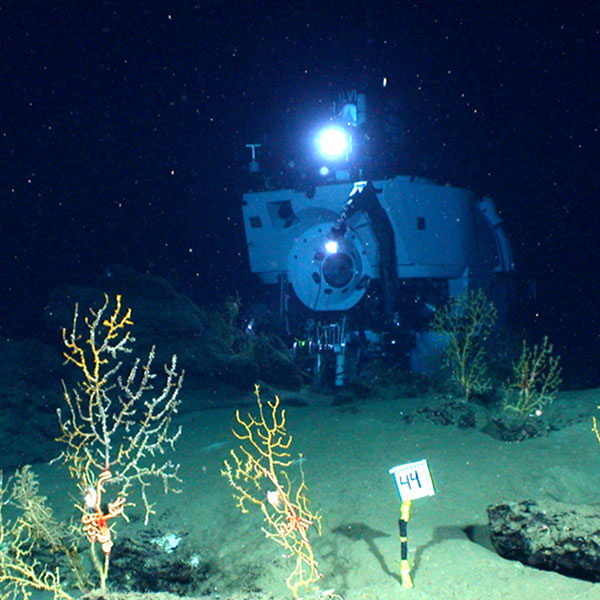
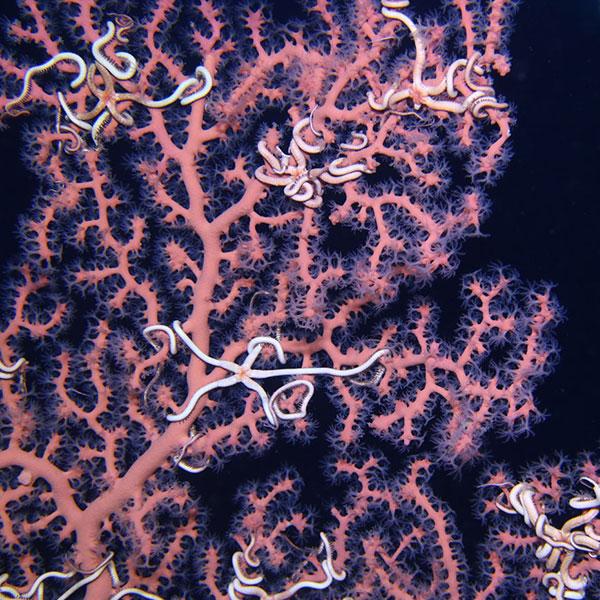
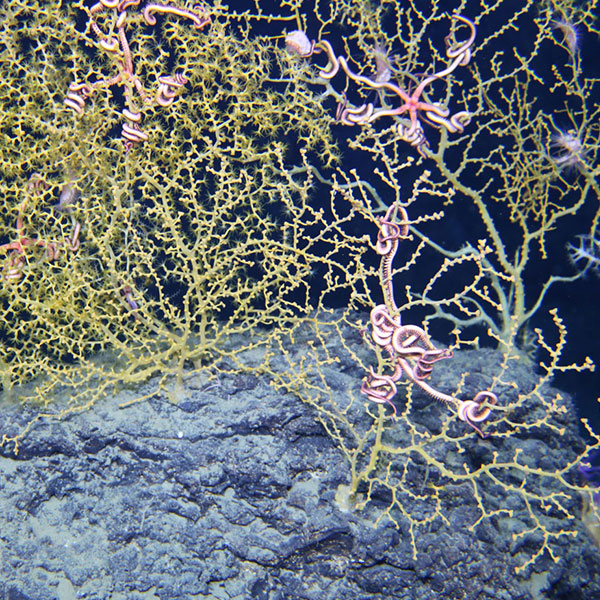
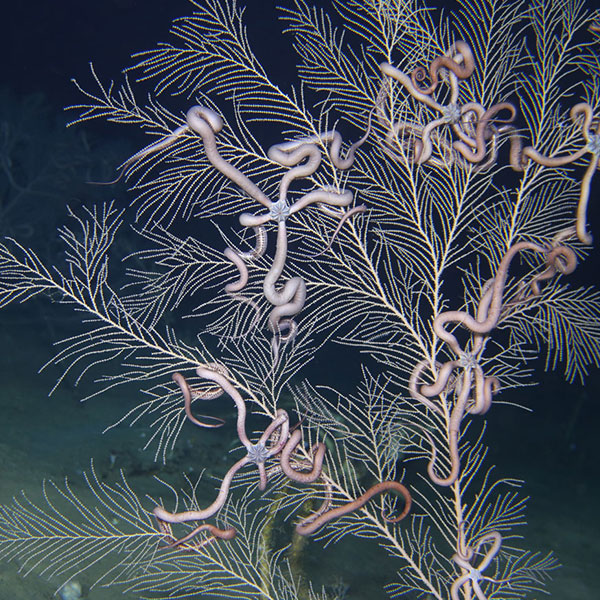
When she’s back in the lab, Joye runs a variety of tests on them to see what conditions and other species create the ideal environment for the microorganisms to flourish and degrade oil more quickly.
Discovering new species is an additional bonus of exploring where no one has gone before.
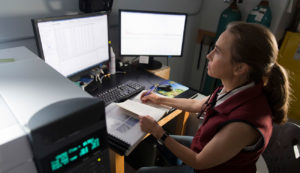 Joye’s expeditions, which have been featured on BBC America’s Planet Earth and in shorts from BBC Earth, have uncovered vast previously unknown and spellbinding worlds under the sea. Imagine cotton candy pink and purple steeples rising from the ocean floor. (Researchers call these towers “pagodas.”) Reflective pools form underneath the branches, technically known as flanges, of the pagoda towers. Tube-like giant worms growing on top and along the edges of the pagodas that can erupt and spew lava-hot liquid, roasting the sessile worms that call the underwater mountain ranges home.
Joye’s expeditions, which have been featured on BBC America’s Planet Earth and in shorts from BBC Earth, have uncovered vast previously unknown and spellbinding worlds under the sea. Imagine cotton candy pink and purple steeples rising from the ocean floor. (Researchers call these towers “pagodas.”) Reflective pools form underneath the branches, technically known as flanges, of the pagoda towers. Tube-like giant worms growing on top and along the edges of the pagodas that can erupt and spew lava-hot liquid, roasting the sessile worms that call the underwater mountain ranges home.
“I work in some of the most incredibly interesting, extreme habitats on Earth,” Joye says. “The processes occurring in these habitats occur in other places; they’re just accelerated here because the conditions are so hot and because of the high pressure. We can translate what we do to just about any habitat. That’s what draws me to these extreme environments.”
But with the incredible discoveries came a sobering one: Even the ocean floors aren’t safe from humankind’s impact.
“I have never seen so much trash in my life as I saw on the bottom of the Gulf of California,” Joye says, shaking her head. “Elsa balloons, Mickey Mouse balloons, a Christmas tree—I kid you not—fully decorated with ribbon on the bottom of the ocean floor. There is no place on this planet that has not been touched by human activity.”
Calling the ocean the kidney of the world due to its ability to clean the air and sustain life, Joye says people don’t realize the importance of keeping oceans healthy, treating them instead as big dumping grounds for garbage.
“I hope that people take the time to appreciate what the ocean does for this planet and every single person on it and makes a small change in their lives that perhaps helps advance ocean sustainability,” Joye says. “We have to start putting the environment—and the oceans in particular—first. We need to make protecting it a priority.”
Oil and Water
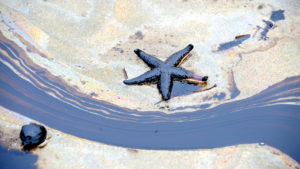
Although her ocean floor discoveries have garnered her international recognition, Joye is probably best known for her research on oil spills, particularly her work on the ramifications of 2010’s Deepwater Horizon spill in the Gulf of Mexico. Her team of researchers had been working in the area for 15 years before the spill and had preliminary data that helped guide the response and research agenda.
In partnership with the Gulf of Mexico Research Institute consortium and the Schmidt Ocean Institute, Joye and her colleagues developed tools and techniques to chase oil spills, track where the oil spreads and use microorganisms to help degrade (essentially by eating) the spilled oil, lessening the need for environmentally damaging chemicals used to disperse patches of oil.
The knowledge of how these organisms can be harnessed to contain future spills is invaluable.
“We know these organisms already exist in the Gulf of Mexico and other places too,” Joye says. “If we can figure out a way to promote their growth and response to spills in the natural world, that would be a huge advancement in dealing with future oil spills.”
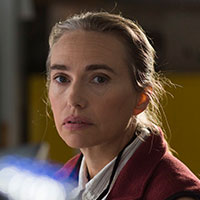
About the Researcher
Samantha “Mandy“ Joye
Georgia Athletic Association Professor
Marine Sciences
Franklin College of Arts & Sciences



